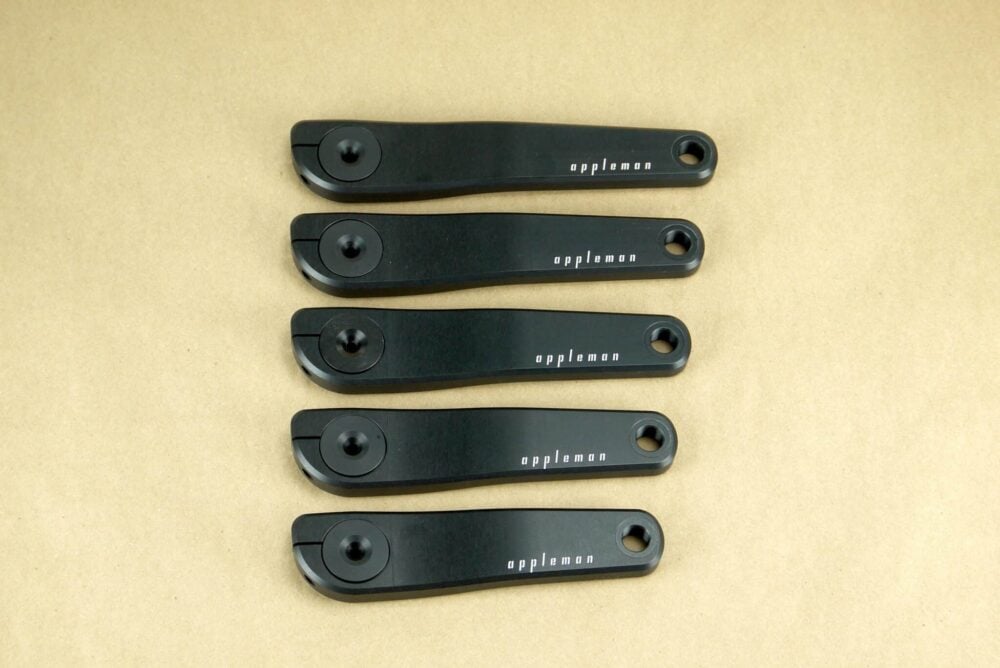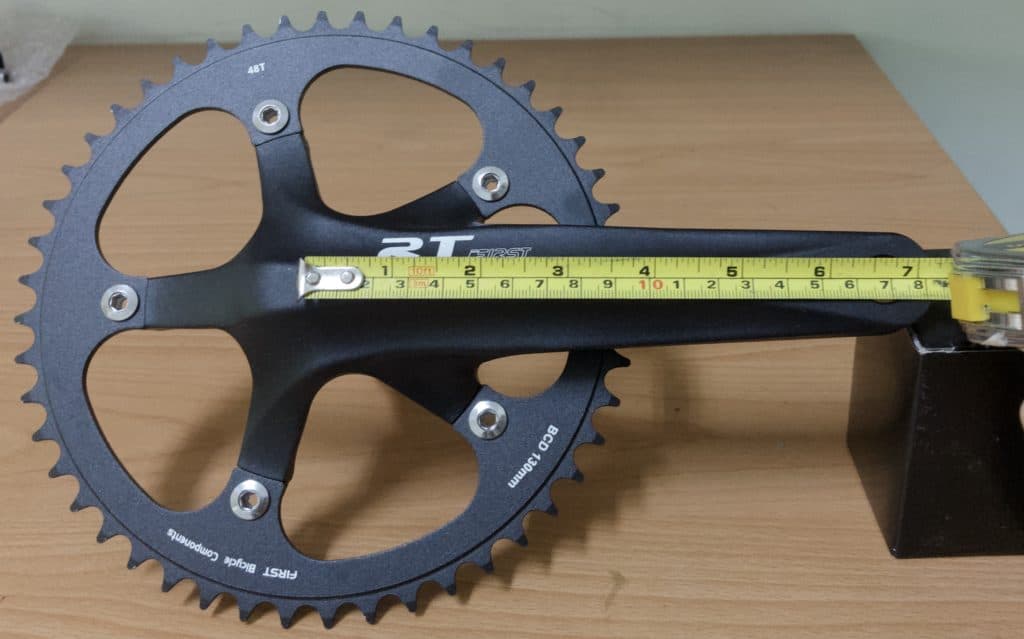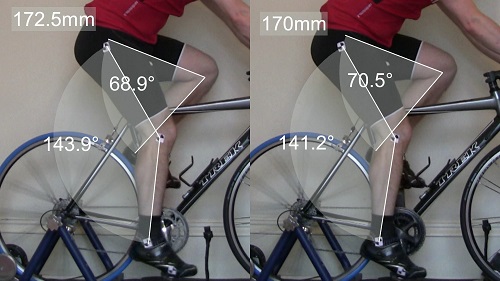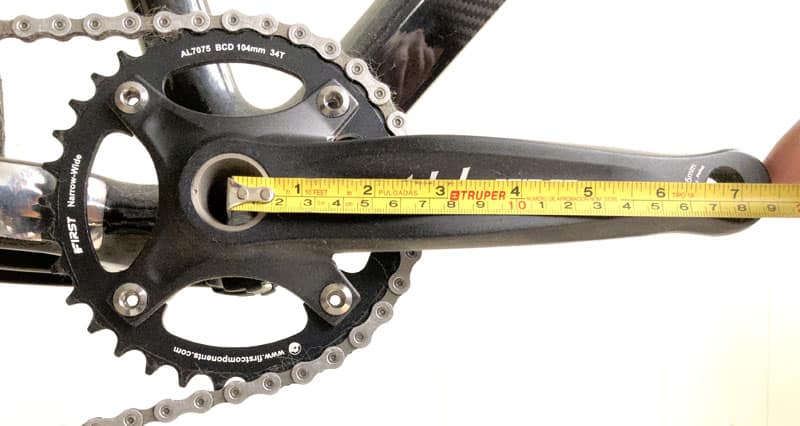170 vs 175 Crank: What’s the Difference?
When it comes to choosing the right crank arm length, two popular options are the 170mm and 175mm crank arms. While both lengths have their unique characteristics, advantages, and disadvantages, understanding the differences between them is crucial for cyclists to make informed decisions.
The 170mm crank arm is a popular choice among road cyclists, as it provides a more compact pedaling motion and reduces the strain on the knees. This length is ideal for riders with shorter legs, as it allows for a more efficient pedaling technique and reduces the risk of overextension. Additionally, the 170mm crank arm is often preferred by cyclists who prioritize comfort and efficiency over raw power output.
On the other hand, the 175mm crank arm is a favorite among mountain bikers and riders who prioritize power output and leverage. This length provides a slightly longer pedaling motion, which can result in increased power output and improved acceleration. However, the 175mm crank arm may not be suitable for riders with shorter legs, as it can lead to overextension and reduced pedaling efficiency.
When comparing the 170mm and 175mm crank arms, it’s essential to consider the specific needs and preferences of the rider. For example, a rider who prioritizes comfort and efficiency may prefer the 170mm crank arm, while a rider who prioritizes power output and leverage may prefer the 175mm crank arm. Ultimately, the choice between the two lengths depends on the individual rider’s goals, preferences, and riding style.
In terms of the impact on the riding experience, the difference between the 170mm and 175mm crank arms can be significant. The 170mm crank arm can provide a more comfortable and efficient pedaling experience, while the 175mm crank arm can offer increased power output and leverage. However, it’s crucial to note that the optimal crank arm length depends on various factors, including leg length, riding style, and bike type.
By understanding the differences between the 170mm and 175mm crank arms, cyclists can make informed decisions and choose the right crank arm length for their specific needs and preferences. Whether prioritizing comfort and efficiency or power output and leverage, the right crank arm length can significantly impact the riding experience and overall performance.
How to Choose the Right Crank Arm Length for Your Bike
Choosing the right crank arm length for your bike can be a daunting task, especially with the numerous options available in the market. However, by considering a few key factors, you can determine the ideal crank arm length for your bike and riding style.
One of the most important factors to consider is your leg length. Riders with shorter legs typically prefer shorter crank arms, usually in the range of 165-170mm, to reduce the strain on their knees and improve pedaling efficiency. On the other hand, riders with longer legs may prefer longer crank arms, usually between 175-180mm, to increase their power output and leverage.
Riding style is another crucial factor to consider when choosing a crank arm length. Road cyclists, for example, often prefer shorter crank arms to improve their pedaling efficiency and reduce the strain on their knees. Mountain bikers, on the other hand, may prefer longer crank arms to increase their power output and leverage on technical terrain.
Bike type is also an essential factor to consider. For example, a road bike may require a shorter crank arm length to improve pedaling efficiency, while a mountain bike may require a longer crank arm length to increase power output and leverage.
To determine the ideal crank arm length for your bike, follow these steps:
1. Measure your leg length: Measure the length of your legs from the center of your hip joint to the center of your ankle joint. This will give you an idea of your ideal crank arm length.
2. Consider your riding style: Think about your riding style and the type of terrain you typically ride on. If you’re a road cyclist, you may prefer a shorter crank arm length. If you’re a mountain biker, you may prefer a longer crank arm length.
3. Check your bike’s specifications: Check your bike’s specifications to see what crank arm length is recommended. Some bikes may have specific crank arm length requirements, so it’s essential to check before making a purchase.
4. Test different crank arm lengths: If possible, test different crank arm lengths to see what works best for you. You may need to experiment with different lengths to find the one that provides the best pedaling efficiency and comfort.
By following these steps, you can determine the ideal crank arm length for your bike and riding style. Remember to consider your leg length, riding style, and bike type when making your decision. With the right crank arm length, you can improve your pedaling efficiency, comfort, and overall riding experience.
Product Review: Shimano Ultegra 170mm vs 175mm Cranksets
When it comes to choosing a crankset, Shimano’s Ultegra series is a popular choice among cyclists. In this review, we’ll compare and contrast the Shimano Ultegra 170mm and 175mm cranksets, highlighting their features, performance, and value.
The Shimano Ultegra 170mm crankset is a great option for road cyclists who prioritize pedaling efficiency and comfort. With a shorter crank arm length, this crankset provides a more compact pedaling motion, reducing the strain on the knees and improving pedaling efficiency. Additionally, the 170mm crankset is ideal for riders with shorter legs, as it allows for a more efficient pedaling technique and reduces the risk of overextension.
On the other hand, the Shimano Ultegra 175mm crankset is a favorite among mountain bikers and riders who prioritize power output and leverage. With a longer crank arm length, this crankset provides a slightly longer pedaling motion, resulting in increased power output and improved acceleration. However, the 175mm crankset may not be suitable for riders with shorter legs, as it can lead to overextension and reduced pedaling efficiency.
In terms of features, both cranksets share many similarities. They both feature Shimano’s Hollowtech II technology, which provides a lightweight and durable design. Additionally, both cranksets have a wide range of gearing options, making them suitable for various riding styles and terrain.
When it comes to performance, both cranksets deliver exceptional results. The 170mm crankset provides a smooth and efficient pedaling motion, while the 175mm crankset offers increased power output and leverage. However, the 175mm crankset may require more effort to pedal, especially for riders with shorter legs.
In terms of value, both cranksets offer excellent value for money. The Shimano Ultegra 170mm crankset is priced around $200, while the 175mm crankset is priced around $250. Considering the quality and performance of these cranksets, they are well worth the investment.
Ultimately, the choice between the Shimano Ultegra 170mm and 175mm cranksets depends on your specific needs and preferences. If you prioritize pedaling efficiency and comfort, the 170mm crankset may be the better choice. However, if you prioritize power output and leverage, the 175mm crankset may be the better option.
The Impact of Crank Arm Length on Pedaling Efficiency
Pedaling efficiency is a critical aspect of cycling, and crank arm length plays a significant role in determining it. The length of the crank arm affects the pedaling motion, muscle engagement, and energy expenditure, ultimately impacting the overall efficiency of the ride.
When it comes to pedaling efficiency, a shorter crank arm length is generally considered more efficient. This is because a shorter crank arm length reduces the distance the pedal needs to travel, resulting in a more compact pedaling motion. This, in turn, reduces the energy expenditure required to pedal, making the ride more efficient.
On the other hand, a longer crank arm length can result in a more powerful pedaling motion, but it also increases the energy expenditure required to pedal. This is because a longer crank arm length requires more muscle engagement and energy to pedal, which can lead to fatigue and reduced efficiency.
The 170mm vs 175mm crank debate is a prime example of how crank arm length affects pedaling efficiency. The 170mm crank arm length is generally considered more efficient for road cycling, as it provides a more compact pedaling motion and reduces the energy expenditure required to pedal. However, the 175mm crank arm length is often preferred by mountain bikers, as it provides a more powerful pedaling motion and increased leverage on technical terrain.
From a scientific perspective, the impact of crank arm length on pedaling efficiency can be explained by the concept of biomechanics. The pedaling motion involves a complex interplay of muscle groups, joints, and bones, and the length of the crank arm affects the way these components interact. A shorter crank arm length reduces the range of motion of the knee and hip joints, resulting in a more efficient pedaling motion.
In conclusion, the length of the crank arm has a significant impact on pedaling efficiency, and understanding this relationship is crucial for cyclists to optimize their performance. By choosing the right crank arm length, cyclists can improve their pedaling efficiency, reduce energy expenditure, and enhance their overall riding experience.
Real-World Examples: How Crank Arm Length Affects Riders
While the debate between 170mm and 175mm crank arms continues, real-world examples can provide valuable insights into how crank arm length affects riders. In this section, we’ll explore several examples of riders who have switched from one crank arm length to another, highlighting the benefits and drawbacks they experienced.
Example 1: Road Cyclist Switches from 175mm to 170mm Crank Arms
A road cyclist, who had been riding with 175mm crank arms for several years, decided to switch to 170mm crank arms to improve his pedaling efficiency. After making the switch, he noticed a significant reduction in fatigue and an improvement in his overall pedaling efficiency. However, he also experienced a slight decrease in power output, which he attributed to the shorter crank arm length.
Example 2: Mountain Biker Switches from 170mm to 175mm Crank Arms
A mountain biker, who had been riding with 170mm crank arms, decided to switch to 175mm crank arms to increase his power output and leverage on technical terrain. After making the switch, he noticed a significant increase in power output and improved performance on technical terrain. However, he also experienced a slight increase in fatigue, which he attributed to the longer crank arm length.
Example 3: Rider with Short Legs Switches from 175mm to 165mm Crank Arms
A rider with short legs, who had been riding with 175mm crank arms, decided to switch to 165mm crank arms to improve his pedaling efficiency and reduce fatigue. After making the switch, he noticed a significant reduction in fatigue and an improvement in his overall pedaling efficiency. He also experienced a slight decrease in power output, which he attributed to the shorter crank arm length.
These examples illustrate the importance of choosing the right crank arm length for your riding style and preferences. While there is no one-size-fits-all solution, understanding how crank arm length affects riders can help you make an informed decision and optimize your performance.
In conclusion, the relationship between crank arm length and riding performance is complex and influenced by various factors, including riding style, bike type, and personal preference. By understanding how crank arm length affects riders and considering the benefits and drawbacks of different crank arm lengths, you can make an informed decision and optimize your performance.
Conclusion: Finding the Perfect Crank Arm Length for Your Ride
Choosing the right crank arm length is a crucial decision for cyclists, as it can significantly impact pedaling efficiency, comfort, and overall performance. In this article, we’ve explored the importance of crank arm length, compared and contrasted 170mm and 175mm crank arms, and provided a step-by-step guide on how to determine the ideal crank arm length for your bike.
We’ve also reviewed and compared Shimano Ultegra 170mm and 175mm cranksets, highlighting their features, performance, and value. Additionally, we’ve delved into the science behind pedaling efficiency and how crank arm length affects it, and shared real-world examples of riders who have switched from one crank arm length to another.
Ultimately, the key to finding the perfect crank arm length is to experiment and find what works best for your riding style and preferences. By considering factors such as leg length, riding style, and bike type, you can optimize your crank arm length for improved efficiency, comfort, and overall riding experience.
Remember, there is no one-size-fits-all solution when it comes to crank arm length. What works for one rider may not work for another, and it’s essential to prioritize your individual needs and preferences when making a decision.
By taking the time to research and experiment with different crank arm lengths, you can unlock your full potential as a cyclist and enjoy a more efficient, comfortable, and enjoyable ride.
Final Thoughts: Crank Arm Length and Riding Performance
In conclusion, the relationship between crank arm length and riding performance is complex and influenced by various factors, including riding style, bike type, and personal preference. While there is no one-size-fits-all solution, understanding the impact of crank arm length on pedaling efficiency, comfort, and overall performance can help riders make informed decisions and optimize their performance.
The debate between 170mm and 175mm crank arms is a prime example of how crank arm length can affect riding performance. While both lengths have their unique characteristics, advantages, and disadvantages, the right choice depends on individual needs and preferences.
By considering factors such as leg length, riding style, and bike type, riders can determine the ideal crank arm length for their bike and optimize their performance. Additionally, experimenting with different crank arm lengths can help riders find the perfect fit for their riding style and preferences.
Ultimately, the key to unlocking optimal riding performance is to prioritize individual needs and preferences when choosing a crank arm length. By doing so, riders can enjoy a more efficient, comfortable, and enjoyable ride.
In the world of cycling, every detail matters, and crank arm length is no exception. By understanding the impact of crank arm length on riding performance, riders can take their performance to the next level and enjoy a more rewarding riding experience.
Final Thoughts: Crank Arm Length and Riding Performance
In conclusion, the relationship between crank arm length and riding performance is a complex one, influenced by various factors such as riding style, bike type, and personal preference. While there is no one-size-fits-all solution, understanding the impact of crank arm length on pedaling efficiency, comfort, and overall performance can help riders make informed decisions and optimize their performance.
The debate between 170mm and 175mm crank arms is a prime example of how crank arm length can affect riding performance. While both lengths have their unique characteristics, advantages, and disadvantages, the right choice depends on individual needs and preferences.
By considering factors such as leg length, riding style, and bike type, riders can determine the ideal crank arm length for their bike and optimize their performance. Additionally, experimenting with different crank arm lengths can help riders find the perfect fit for their riding style and preferences.
Ultimately, the key to unlocking optimal riding performance is to prioritize individual needs and preferences when choosing a crank arm length. By doing so, riders can enjoy a more efficient, comfortable, and enjoyable ride.
In the world of cycling, every detail matters, and crank arm length is no exception. By understanding the impact of crank arm length on riding performance, riders can take their performance to the next level and enjoy a more rewarding riding experience.
As we conclude this article, we hope that you have gained a deeper understanding of the importance of crank arm length in cycling and how it can impact your riding performance. Whether you’re a seasoned pro or a beginner, optimizing your crank arm length can make a significant difference in your overall riding experience.







